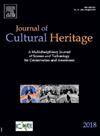New AI challenges for cultural heritage protection: A general overview
IF 3.3
2区 综合性期刊
0 ARCHAEOLOGY
引用次数: 0
Abstract
Cultural heritage plays an important social role in preserving collective identity and history, acting as a link between past, present and future. In this same context, the contribution of technological innovations plays a fundamental role as it provides the tools and solutions needed to address the issues of cultural heritage preservation and enhancement. This study presents a comprehensive review of the application of machine learning (ML) techniques in the field of cultural heritage (CH) protection, highlighting important developments and innovations in recent years. The main applications of ML and AI methodologies are analyzed, including artefact analysis, restoration, conservation strategies, and enhancing the visitor experience. The available studies are classified according to the areas of application, the types of data and technologies employed and the types of cultural heritage assets they focus on. The classification also highlights potential research challenges and provides indications for future directions. The study shows the increasing adoption of the multidisciplinary approach combining ML and AI with traditional tools of protection and conservation. The discussion is articulated through the reinterpretation of several case studies that demonstrate the real implications of such technologies, including the preventive maintenance of buildings, as well as the digitalization and three-dimensional recreation of artefacts and visitor experiences through virtual and augmented reality. This highlights the need for closer collaboration between technicians, conservators, and cultural workers to ensure thoughtful, ethical, and effective integration of these technologies into cultural heritage conservation.
人工智能在文化遗产保护中的新挑战:概述
文化遗产在保护集体身份和历史方面发挥着重要的社会作用,是连接过去、现在和未来的纽带。在同样的背景下,技术创新的贡献发挥着根本作用,因为它提供了解决保护和加强文化遗产问题所需的工具和解决办法。本研究全面回顾了机器学习(ML)技术在文化遗产(CH)保护领域的应用,突出了近年来的重要发展和创新。本文分析了机器学习和人工智能方法的主要应用,包括人工制品分析、修复、保护策略和增强游客体验。现有的研究是根据应用领域、所采用的数据和技术类型以及它们所关注的文化遗产资产类型进行分类的。该分类还突出了潜在的研究挑战,并为未来的方向提供了指示。该研究表明,越来越多的人采用多学科方法,将机器学习和人工智能与传统的保护和保护工具相结合。讨论是通过重新解释几个案例研究来阐述的,这些案例研究展示了这些技术的真正含义,包括建筑物的预防性维护,以及通过虚拟和增强现实对人工制品的数字化和三维再造以及游客体验。这凸显了技术人员、保护人员和文化工作者之间更密切合作的必要性,以确保将这些技术周到、合乎道德、有效地整合到文化遗产保护中。
本文章由计算机程序翻译,如有差异,请以英文原文为准。
求助全文
约1分钟内获得全文
求助全文
来源期刊

Journal of Cultural Heritage
综合性期刊-材料科学:综合
CiteScore
6.80
自引率
9.70%
发文量
166
审稿时长
52 days
期刊介绍:
The Journal of Cultural Heritage publishes original papers which comprise previously unpublished data and present innovative methods concerning all aspects of science and technology of cultural heritage as well as interpretation and theoretical issues related to preservation.
 求助内容:
求助内容: 应助结果提醒方式:
应助结果提醒方式:


